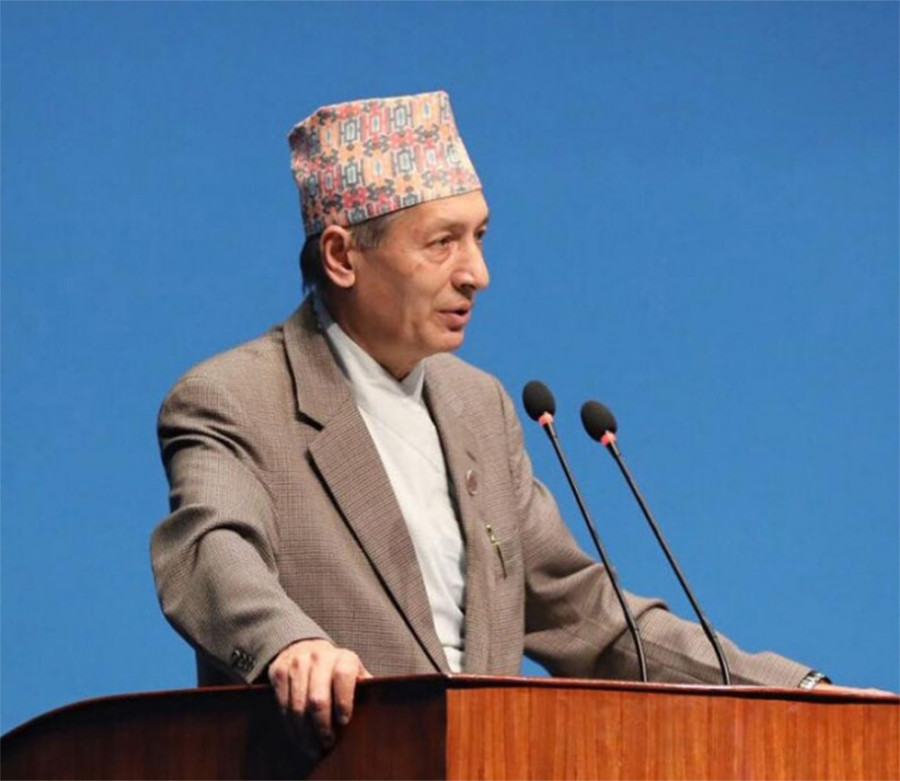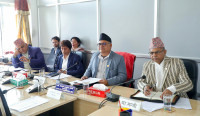National
Provincial governments’ capital expenditures abysmally low: Mid-term Budget Review
Capital expenditures of Karnali and Province 2 stand at just 3.8 percent in the first half of the current fiscal year.
Prithivi Man Shrestha
The federal government's capital expenditure during the same period stood at 15.4 percent of the capital budget, not much better than the performance of the provincial governments.
The capital budget is mostly used for development activities and is crucial for the economic development of the country. The government expenditure helps the private sector to spend, bringing the much-needed dynamism in the economy.
According to the Mid-Term Review, Karnali and Province 2 governments could each spend just 3.8 percent of their total capital budget as of the first half of the current fiscal year.
The two provincial governments spent 6.4 percent and 6.9 percent of their total budgets, respectively.
Economic Affairs and Planning Minister of the Karnali Province, Prakash Jwala, admitted the poor capital expenditure during the first half of this fiscal year was due to two factors: time taken for conducting organisation and management (O&M) surveys and shortage of government employees, particularly the technical staff.
“We had to make an entry of the budget as per the new offices created after the O&M survey. So, we could not authorise the government offices to spend during the first four months of this fiscal year, which affected the expenditure,” he said. “On the other hand, a chronic lack of government employees, which is still half of the total required staff is another reason why the expenditure has remained poor.”
After O&M, the number of staff required for the Province has increased to 2,500 from 1,900 when the employees’ adjustment took place last year. But, only around 1,200 staff are available.
The Karnali Province had requested the Federal Public Service Commission to recruit some staff for it, last year. “As the commission refused to entertain our request, we have hired some technical staff on a contract basis, which has helped to implement development projects to some extent,” Jwala said.
Another reason, according to him, is that the development activities hardly take place during the winter season, as many districts within the provinces are covered in snow. However, Jwala hoped that development activities would speed up as most of the contracts have been awarded for the current fiscal year.
Bagmati Province has stood third in terms of poor capital budget spending with just 10 percent and Sudurpashchim Province fourth, with a capital spending of 12 percent.
The remaining three provinces have shown a relatively better performance. Province 1 has topped the charts in terms of capital spending. Province 1 recorded capital expenditure of 22 percent, followed by Province 5 with 19.7 percent, and Gandaki Province with 18.4 percent.
However, experts say the provinces do not have as much hindrance as they had in the last fiscal year to increase capital expenditure.
“Unlike the last fiscal year, there isn’t the problem related to the lack of laws, employees and office spaces in the provinces,” said Khim Lal Devkota, former vice-chairman of Policy Commission at Bagmati Province.
He, however, said the provinces are not making early preparations for calling tenders such as preparing bid documents and the lack of proper monitoring of expenditure in the development projects were major factors behind the poor capital expenditure of provincial governments.
“The various subject-wise committees of the provincial assemblies have not been active to question the performance of various provincial ministries,” said Devkota.




 18.12°C Kathmandu
18.12°C Kathmandu


.jpg&w=200&height=120)












